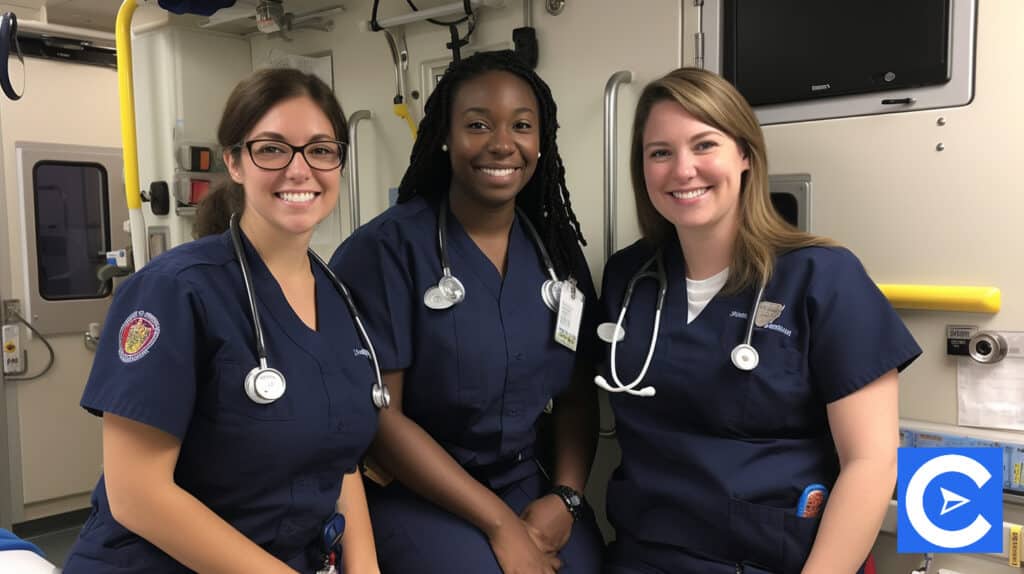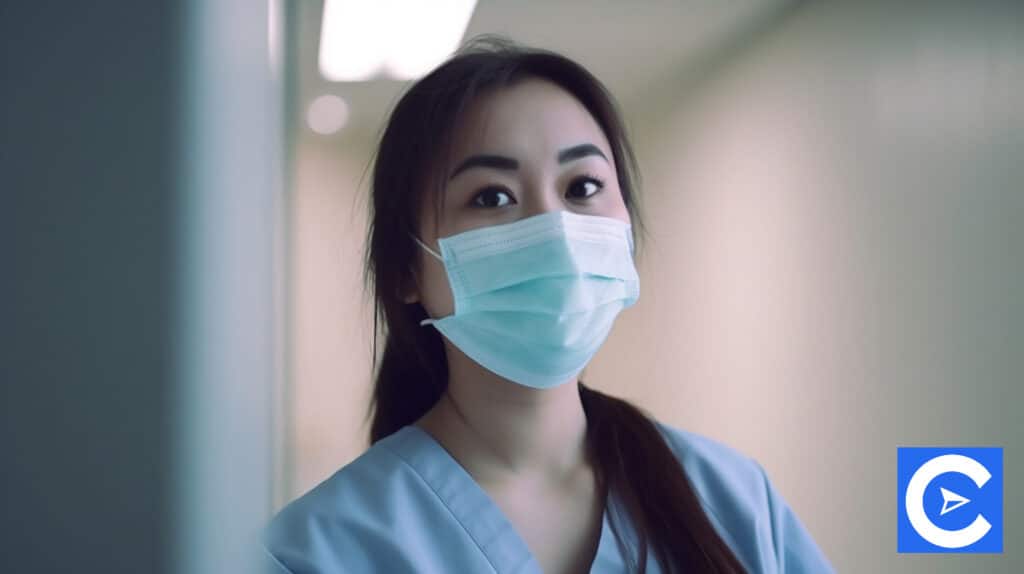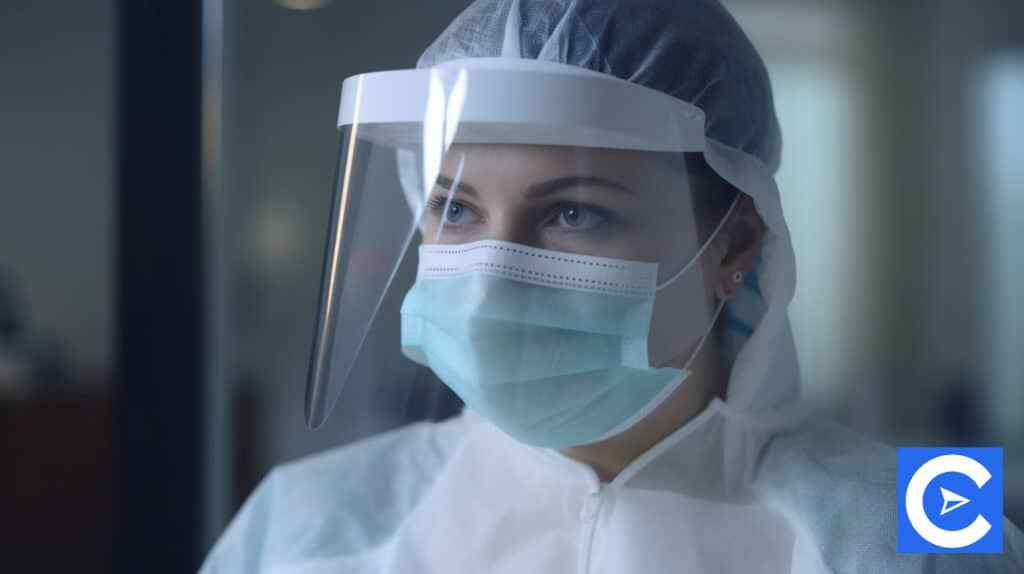Other Free NCLEX PN Study Guides:
There are 8 Modules in NCLEX PN Study Guide. Here you can navigate all the NCLEX PN Study guide modules.
- NCLEX Study Guide Home
- Module 1 | Coordinated Care Of the Patient
- Module 2 | Overall Safety and Control of Infections
- Module 3 | The promotion of health and maintenance
- Module 4 | Integrity in psychosocial functioning
- Module 5 | Providing Basic Care and Ensuring Patient Comfort
- Module 6 | Therapies: Pharmacological and parenteral
- Module 7 | Potential risk reduction
- Module 8.1 | Adapting physiologically
- Module 8.2 | Adapting physiologically
- Module 8.3 | Adapting physiologically
let’s get started right away.
Keeping patients safe in a medical facility.
According to the Joint Commission, patient safety goals already exist, including:
- Identification mistakes must be prevented by taking the right steps to do so
- To limit potential errors, caregivers must always communicate in a measured, careful and accurate manner
- Maintain systems for preventing medication errors, such as giving the wrong patient the wrong medication
- A patient’s medication is reconciled when they move between hospitals
- It is essential to minimize the risk of hospital-based infections
- It is imperative to implement fall prevention programs and evaluate their overall effectiveness
Medical facility patient safety factors
These include:
- Signaling staff education for patients
- Providing protection from falling as well as electrical hazards
- Assigning rooms appropriately
Mistakes in medication administration
In the United States, medication errors cause over 7,000 deaths per year.
However, they can be avoided by taking the following steps:
- Avoiding error-prone symbols and abbreviations
- Verify that orders are understood verbally and keeping handwriting readable
- Utilizing barcodes and scanners
- Staff can be educated by providing a list of similar-sounding medications
- Drug verification and dosage policies should be instituted
- Educate patients about their medications, adding another layer of protection
Patient allergies and assessments
Assessing a patient’s allergies requires determining their exact symptoms.
Identify when their reaction started, what treatment they have used before, and if they have experienced any complications from treatments.
There are many things that patients can be allergic to, including:
- Food
- Latex
- Certain environments
Deficits that compromise the safety of patients
The overall safety of patients in a medical facility may be compromised if they have deficits such as difficulty finding their way around.
These include:
- Visual impairments: For instance, a patient may trip over something in their path
- Hearing impairments: Patients with hearing impairments may not hear smoke detectors and alarms
- Perceptual/sensory impairment: A stroke victim may not feel sensation on one side of the body, for example.
Precautions when it comes to non-pharmacologic prescription
Here are a few things to keep in mind:
- In addition to providing oxygen to a patient at the appropriate levels, oxygen is administered in a safe manner
- Utilizing assistive devices correctly, such as a walker
- Preventing contamination of dialysis equipment
- Compresses should be used correctly
The safety of patients with seizures should be ensured through seizure precautions.
There are a number of standard safety protocols that should be followed for these patients.
It can include ensuring that beds are properly cushioned, that they are placed low, and that suctioning is kept nearby in case it is needed.
Patient boarding
Patient boarding involves patients staying in the emergency department after they have been admitted as inpatients.
In some cases, this is due to a lack of beds or insufficient staffing in other wards.
As a result, the ED can become overcrowded, which is never ideal and can have a negative impact on patient safety.
There are times when boarding is necessary, but no more than four hours should be spent in the emergency room.
In the event that the patient cannot leave the ED after that period, additional staff should be brought in to specifically care for them.
Fire safety: RACE
RACE is an acronym used for hospital fire safety and stands for:
- Rescue: Take all patients out of the area where the fire is situated
- Activate: Make sure the fire alarms are activated
- Confine: Used doors to try to confine the fire
- Evacuate/extinguish
Ergonomics
In this final section, we will discuss ergonomics and how nurses can prevent self-injury based on certain principles.
These include:
- Body mechanics in terms of correct body alignment for example
- Correct lifting procedures
- Avoiding repetitive movements
Emergency response plans and disaster management

It is imperative that all medical facilities have disaster management and emergency response plans in place.
Disasters
There are many types of disasters, including:
- Natural
- Technological
- Human conflict
It is impossible to have just one type of disaster management plan.
Regardless of their type, however, their development follows a few basic steps.
There will be a planning team for each type of disaster management plan.
It is their responsibility to draft a disaster management plan timeline and other variables.
Among them are fees, costs, and resources that ensure the plan is successful.
After that, the analysis of potential disasters that need to be covered by the plan can begin.
As a result, it is possible to determine just how vulnerable the organization is to potential hazards.
A disaster response plan is then drawn up.
This process involves reducing and removing hazardous situations.
In addition, the plan is continuously reviewed and updated after it is implemented.
Let’s also briefly discuss emergency response plans.
From natural disasters to bomb threats, these plans can cover it all.
Communication, resources, assets on hand, staff responsibilities, and how clinical activities will be supported are components of these plans.
Casualty incidents: Multiple vs Mass casualties
Multiple casualty events include the following:
- The involvement of three or more people in an incident
- The involvement of one to three services (police, fire department, ambulance) and one jurisdiction in an incident.
- An incident that requires triage. This is usually only primary triage
- All medical standards are met when transporting non-dead patients to care facilities
Mass casualty events include the following:
- A multi-service incident that involves several jurisdictions and numerous services
- A color-coded triage system (including secondary triage) and designated waiting areas are necessary
- It is possible for patients who are not expected to survive to receive delayed care, as priority is given to transporting patients whose condition is read and yellow triaged
Triage principles
There are four classifications in primary triage:
- P1 – Red: These patients will need care immediately and are currently experiencing life-threatening conditions. This could include severe burns, breathing problems,
- P2 – Yellow: Treatment can be delayed but not by more than 45-60 minutes.
- P3 – Green: Only minor injuries so can wait long periods for treatment, if necessary
- P4 – Black: Extensive injuries and not likely to survive or already deceased
Terrorism
Hospitals must prepare for terrorist acts as they are a real threat.
Note the B-NICE hazardous materials incidents that are related to these attacks.
Here’s how it breaks them down:
- B: Biological (toxins, fungi, viruses, or bacteria)
- N: Nuclear/radiological
- I: Incendiary
- C: Chemical
- E: Explosive
Disaster planning and management: Disaster recovery
Disaster recovery refers to the final stages of disaster response.
There are two phases to this:
- Restoration period: Recovery begins with this phase. It is the responsibility of local authorities to ensure the safety and security of the area where the disaster occurred, to restore services and to fix utilities, as well as to remove any wreckage that remains and to allow people who were evacuated to return.
- Reconstruction period: The area that was affected by the disaster is restored over a long period of time. A return to normality is also observed economically as well
Security plan
The last step is to look at a security plan.
In the event of a security breach at a healthcare facility, this is the plan that will be implemented to help ensure staff and patient safety.
A security plan should include the following components:
- Security workers: Who protect the facility
- Silent alarms: To alert security when necessary
- Locked units: To enter these, access codes are required, for example, a psychiatric unit
- “Do not acknowledge patients” which are those where information, including confirming if they are in the facility or not, cannot be given to others
- Announcements: Using codes to alert to emergencies or threats
- Security in newborn nurseries: This includes various security measures to secure and protect newborns
- Violence prevention: This includes staff education, alarm systems, access control, and more
- Controlled access: This is not only using locked areas but includes access control by fingerprint or card and other measures
The following principles must be included in an evacuation plan:
- In order for an evacuation to be triggered, what conditions must be met?
- What is the chain of command for decision-making?
- Evacuation procedures: what are they?
- Is there a process in place for assisting patients during the evacuation
- When critical operations must be shut down, who decides and what procedures are in place to do so?
- How are staff and patients tracked?
- How will staff be moved to other facilities?
Handling hazardous materials
In the course of their work, nurses may be required to handle and administer hazardous materials.
Medical wastes can also come in a variety of forms, while hazardous wastes need to be stored in special containers.
Every medical facility should have a plan for handling hazardous materials.
This includes:
- Providing staff with the correct training regarding the safe handling of these materials. This training should happen every annum
- Protecting staff when handling these materials with the correct PPE equipment
- Labeling hazardous materials clearly for identification purposes
- Maintaining proper storage of hazardous materials
- Providing safety data sheets for all hazardous materials
- Ensuring that decontamination procedures are followed. A shower area as well as eyewash stations should be included here
- Making sure any accidental exposures are reported and recorded
It is necessary to dispose of biological waste in hazardous waste containers.
To deactivate those that are contaminated or infected, a hypochlorite solution is needed.
The body can also be infected with biological hazards in a variety of ways including:
- Into the lungs through the nasal passage (airborne)
- Eating or drinking (ingestion)
- Through skin that’s broken or even wounds (subcutaneous)
- Through skin that’s intact (percutaneous)
- Through mouth and nose lining (Mucosal)
Controlling infections

Now let’s talk about infection control.
Nosocomial infections
Nosocomial infections are acquired in hospitals.
The most common are:
- Enterococci
- Enterobacteriaceae
- Escherichia coli
- Group B Hemolytic Streptococci (GBS)
- Staphylococcus aureus
- Methicillin resistant Staphylococcus aureus (MRSA)
- Clostridium difficile
- Candida
- Aspergillus
Considering you’ll be covering this in your coursework, we won’t go into great detail about which types of infections they cause. It’s just important to be aware of them.
Infections related to catheter use
Catheter infections can lead to serious complications in medical facilities.
A fungal infection, such as Candida, or a bacterial infection, such as Staphylococcus aureus or enterococcus, can cause them.
Nurses must remain vigilant when catheters are being used as these infections can result in superficial thrombophlebitis, septic shock, osteomyelitis, septic pulmonary emboli, bacteremia, and infective endocarditis.
Control measures for infections
A standard infection control procedure is put in place in medical facilities to prevent the transmission of microorganisms between medical staff and patients.
Handwashing regularly, wearing gloves if necessary, and using personal protective equipment such as gowns and face shields are part of these procedures.
When treating patients with TB, SARS, and Covid-19, airborne precautions are also necessary due to the long shelf life of tiny droplets that travel through the air.
It is possible to combat this by using N95 masks and setting up negative pressure rooms for patients.
When dealing with fecally transmitted infections, gloves, gowns, and contact precautions should be worn.
Infection control plans
Any infection control plan should include the following:
- Lowering the rate of infection
- Assessing infection control measures and evaluating them
- Defining endemic threshold rates
- Detecting and identifying outbreaks
- Getting staff buy-in and compliance
- Conforming to standards of accreditation
- Defending malpractice lawsuits
- Comparison of infection rates between medical facilities
Needlestick injury protocol
It is a fact that needlestick injuries happen in hospital settings.
Whenever this happens, the wound should be washed with water and soap as soon as possible.
As soon as the incident has been reported to the appropriate supervisor, the needlestick injury protocol should be followed.
Based on the patient’s health history, testing and prophylaxis may be required.
Infections of a viral nature

Those will be covered in your coursework, so we’re not going to go into too much detail in this guide.
Herpes simplex
These are the two most common types of herpes simplex:
- HSV-1: Presents as fever blisters or cold sores. The transmission of HSV-1 occurs through close contact.
- HSV-2: Known to cause painful genital lesions and transmitted through sexual contact.
Epstein-Barr infections
The EBV herpes virus causes infectious mononucleosis and is transmitted through body fluids.
Even after the initial infection, epithelial and B cells can remain dormant.
There is a link between EBV and Burkitt and Hodgkin lymphomas, as well as other epithelial and lymphatic tumors.
Rubella, measles and mumps
Rubella commonly called German measles occurs in spring and is spread by respiratory droplets.
Mumps, or parotitis, is also spread via saliva.
Measles, or the rubeola virus, is usually spread through respiratory secretions during winter and spring.
Ensure you read through your coursework to understand how these manifest in patients and how to treat them.
Influenza
Highly contagious, this virus can cause severe respiratory problems.
Types A, B, and C of influenza exist, with C being the least common and not as severe as the others.
As a result of influenza, pneumonia, ARDS, and even death can occur.
Coronavirus
Globally, medical facilities have been dealing with Coronavirus since early 2020.
It manifests similarly to a cold, but can cause people to become extremely ill when they have it.
A medical facility’s Coronavirus protocol should always be followed when dealing with it.
Fifth disease
It is a viral illness caused by parvovirus B19, also known as erythema infectiosum.
Spring is the most likely time for outbreaks to occur, mostly in young children.
Chickenpox
In late winter or early spring, children under the age of 10 are susceptible to this viral infection.
Respiratory Syncytial Virus
Respiratory tracts are affected by this virus.
In addition to a headache, sore throat, and severe nasal congestion, RSV sufferers will also cough.
RSV can cause high fevers and breathing problems in severe cases.
Rotavirus
A child will experience diarrhea, vomiting, and fever as a result of this virus.
Daycare centers and preschools can be easily infected with rotavirus as it is very contagious.
Other viral infections you should study in your coursework include Rosela, Poliomyelitis, and Cytomegalovirus.
Infections of a bacterial nature

Since your coursework covers these topics, we will not go into great detail here except to alert you to those on the exam.
Scarlet fever
It occurs during spring, winter, and fall in schoolchildren.
A Group A beta-hemolytic streptococci is responsible for scarlet fever.
In addition to a high fever and sore throat, it can also result in stomach pain and vomiting.
Diphtheria
Corynebacterium diphtheria is mainly responsible for this disease, which occurs in the fall and winter.
An airway swelling, a lack of appetite, a general feeling of unwellness, sore throat, discharge from the nose, and a mild fever are some of the symptoms of this disease.
Whooping cough
Children without immunization are more likely to contract this disease caused by Bordetella pertussis bacteria.
Cold symptoms precede whooping cough, and it’s identifiable when a “whoop” noise starts to accompany any coughing.
It is also possible for children to vomit if they cough for an extended period of time.
Tetanus
Clostridium tetani causes this disease, and the spores are found in dust and soil, as well as in the GI tract of humans and other animals.
It would be necessary to administer a tetanus shot to a patient who has been bitten by a dog, for example.
Patients may experience headaches, sore jaws, and in severe cases, they may not be able to open their mouths.
There are also symptoms such as seizures, back spasms, fevers, and even incontinence,
Infections of a fungal nature

We won’t spend much time on these topics since they are covered in your coursework.
Cryptococcosis
A fungal infection can result from inhaling Cryptococcus neoformans.
Generally, bird droppings contain the fungus.
In addition to coughing, chest pains, weight loss, fever, headaches, double vision, sensitivity to light, and confusion are also common symptoms.
Among the complications caused by Cryptococcus are meningitis, optic nerve damage, hydrocephalus, and neural defects.
Histoplasmosis
The Histoplasma capsulatum fungus can cause this fungal infection if spores are inhaled.
This fungus is usually transmitted by bird and bat droppings, but healthy individuals are usually asymptomatic.
People with Histoplasmosis and compromised immune systems should be wary, however.
It is common for those carrying this fungus to present with flu-like symptoms.
Pneumocystis
PJP pneumonia is caused by this fungus and poses the greatest danger to immunocompromised patients.
Most patients with PJP exhibit fever, a dry cough, dyspnea, and weight loss.
Complications include ARDS and even death if not treated.
Candidal infections
This category includes a variety of infections, such as:
- Oral thrush: Easily notice by white patches on the tongue
- Candida esophagitis: This can result in chest pains, odynophagia, and dysphagia
- Candidal intertrigo: This is basically diaper rash
- Candidemia: If untreated this can result in endocarditis, osteomyelitis, and other problems
Infections of a parasitic nature

Infections caused by parasites are common.
Let’s look at some of them.
Malaria
A mosquito-transmitted disease, Malaria causes high fever (including chills and sweating), headaches, anemia, jaundice, and hepatosplenomegaly.
As a result of untreated malaria, complications can include acute anemia, failure of the liver, spleen, and kidneys, cerebral malaria, acute respiratory distress syndrome, and even death.
Lyme disease
A bite from a deer tick can cause this disease.
There are three stages:
- Stage 1: A red rash that expands along with fatigue, fever, myalgias, chills, and fatigue are symptoms during this stage.
- Stage 2: Symptoms include stiff neck, headaches, muscle and joint pain, rashes, Bell’s palsy, confusion, heart palpitations, and myocarditis several weeks to months after the initial bite
- After months and possibly years of Lyme disease, a person enters stage 3. The symptoms include rheumatologic and neurologic problems
Zika virus
Women exposed to this virus may experience headaches, fevers, myalgias, arthralgias, rashes, and conjunctivitis.
The virus can cause congenital effects in babies, and it is not presently curable.
It is transmitted by mosquitoes and through sexual contact.
Helminth infestations
There are a variety of worms involved in these infestations, including:
- Roundworms: Cause anemia
- Filariae: Cause elephantiasis
- Flatworms: Cause weight loss
- Flukes
- Pinworms
Other parasitic infections
You should also familiarize yourself with Giardia Lamblia and Toxoplasmosis, which you will find covered in your coursework.









